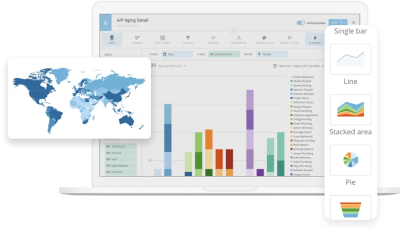What Is a Marketing Analytics Strategy? 3 Core Components for Success
A marketing analytics strategy is a data-driven framework that helps businesses measure the effectiveness of their marketing activities and optimize performance. By collecting, analyzing, and acting on key marketing data, organizations can identify what works, adjust campaigns, and drive better results. In this guide, we’ll break down the three essential components of a successful marketing analytics strategy and explain how to apply them in your business.
To effectively manage their marketing strategies, businesses are starting to incorporate data into their marketing decision-making. This data-driven marketing approach is called marketing analytics. Many businesses are still struggling with how to implement a marketing analytics strategy.
On the one hand, having a well-defined analytics strategy can help you make data-driven decisions that improve your marketing effectiveness. On the other hand, if your analytics strategy is poorly executed or incomplete, it can lead to disaster. Often, companies find themselves hanging in the balance.
So how do you create a successful marketing analytics strategy? And how can you avoid the pitfalls that can lead to failure?
In order to make data-driven decisions that improve marketing effectiveness, you need to have a strong marketing analytics strategy in place. Such a strategy should include the following three components:
1. Collecting accurate and timely data
2. Analyzing the data to identify trends and patterns
3. Acting on the insights gleaned from the data.
Let’s dive into each of these components in more detail.

What is Marketing Analytics, and Why Does it Matter?
Marketing analytics is the process of collecting, analyzing, and reporting data related to marketing performance. It can be used to measure the effectiveness of marketing campaigns, track customer behavior, and optimize marketing strategies.
Why is marketing analytics so important? Because it can help you make data-driven decisions that improve your marketing effectiveness.
Tracking key metrics and analyzing the data can identify trends and patterns that indicate what’s working and what’s not. You can then use this information to make tweaks to your marketing strategy to achieve better results.
So, to improve your marketing effectiveness, start by developing a strong marketing analytics strategy. This will allow you to collect accurate and timely data, analyze it for insights, and take action based on those insights.
Key Components of Marketing Analytics
Marketing analytics is the backbone of data-driven decision-making, offering insights that help businesses optimize campaigns, understand customer behavior, and achieve their goals. By combining data collection, analysis, and actionable reporting, it empowers marketers to make smarter, more informed choices.
Data Collection
The foundation of marketing analytics starts with collecting data from various channels and touchpoints. This includes tracking website interactions, monitoring social media performance, analyzing email campaigns, integrating data from Customer Relationship Management (CRM) systems, and evaluating performance metrics from advertising platforms. Accurate and comprehensive data collection ensures you have a full picture of customer behavior and campaign effectiveness.
Data Analysis
Once the data is collected, the next step is to analyze it using advanced tools and techniques. This involves segmenting your audience based on demographics, behavior, or preferences, applying statistical models to uncover patterns and trends, and using visual dashboards to make complex data easier to understand. Effective analysis helps identify key correlations and opportunities for optimization.
Interpretation and Reporting
Raw data without context is just numbers. The interpretation phase transforms this data into actionable insights by identifying what it means for your marketing strategy. Clear reporting is crucial here—whether it’s creating detailed reports for stakeholders or summarizing findings into visual presentations, the goal is to provide recommendations that drive better decision-making and guide future actions. This step ensures your marketing efforts are aligned with business objectives and customer needs.
The Power of a Strong Marketing Analytics Strategy
A well-executed marketing analytics strategy offers countless benefits. Here are three key reasons why it’s essential for your business:
1. Companies with a marketing analytics strategy achieve greater success
Research shows that businesses excelling in marketing analytics are twice as likely to meet their marketing objectives. Simply put, implementing a robust analytics strategy can give you a competitive edge and significantly increase your chances of reaching your goals.
This doesn’t mean your strategy needs to be flawless from the start, but having a foundation in place provides the insights needed to refine your efforts and drive measurable success.
2. Make smarter, data-driven decisions
Effective decision-making starts with data. Marketing analytics empowers you to track and analyze key metrics, uncovering trends and patterns that highlight what’s working and what’s not. Armed with these insights, you can make informed adjustments to your marketing strategy.
For instance, if you aim to boost organic website traffic, you can use analytics to monitor performance over time. If traffic begins to dip, the data will help pinpoint the issue, allowing you to adapt your strategy to reverse the decline.

3. Optimize your marketing strategies for better results
Beyond decision-making, marketing analytics is a powerful tool for continuous improvement. By identifying underperforming areas, you can fine-tune your strategies to achieve better outcomes and maximize your marketing ROI.
For example, if improving the lifetime value (LTV) of your email campaigns is a priority, analytics can reveal trends over time. A decline in LTV might suggest issues like poor audience segmentation or irrelevant content. By leveraging these insights, you can make targeted changes to improve campaign performance and drive higher value from your efforts.
A strong marketing analytics strategy is the cornerstone of success in today’s data-driven landscape. It not only helps you track progress but also empowers you to strategize smarter, refine your approach, and achieve meaningful results. The question isn’t whether you need marketing analytics—it’s how soon you can start harnessing its potential.
3 Key Elements of a Successful Marketing Analytics Strategy
Now that we’ve explored why a marketing analytics strategy is essential, let’s dive into the three key components that make it successful, along with the tools and techniques to bring it to life.
1. Accurate and Timely Data Collection
The foundation of any effective marketing analytics strategy lies in collecting precise and up-to-date data. This data can originate from various sources, including website traffic, social media, email marketing campaigns, and more.
To collect this data efficiently, you can leverage tools like web analytics platforms, social media monitoring software, and email marketing systems. Centralizing this data in one accessible location is critical for streamlined analysis and decision-making.
The most powerful way to analyze this data holistically—rather than relying on fragmented, siloed insights—is through a business intelligence (BI) tool. BI tools allow you to integrate all your marketing platforms, centralize their data, and uncover trends that would otherwise remain hidden.
Unlike traditional static reports, which offer limited and infrequent updates, BI tools maintain ongoing connections with your systems, providing updates as fast as near-real-time. This ensures you’re always working with the most current data, empowering you to make informed decisions.

2. Data Analysis to Identify Trends and Patterns
Once your data is collected, the next step is to analyze it to uncover trends and patterns. This analysis helps you determine what’s working, what’s not, and what adjustments can improve your strategy.
Contrary to popular belief, data analysis doesn’t have to be overly complex or reserved for data scientists. Modern self-service BI tools simplify the process, allowing anyone to extract actionable insights. These tools enable users to create graphs and charts, compare data across sources, spot correlations, identify trends, and even forecast future outcomes.
Additionally, BI tools provide intuitive data visualizations to present analysis results in a clear, visual format. These visualizations can be organized into interactive dashboards, making it easy to monitor key metrics and observe changes as new data becomes available.
3. Acting on Data-Driven Insights
Data is only as valuable as the actions it inspires. After analyzing your data and identifying patterns, it’s crucial to translate those insights into tangible changes.
With marketing analytics, decision-makers can directly link their actions to real-world results. BI tools simplify this connection by offering clear visibility into how strategies impact key metrics. For example, a marketer can track in real time whether a digital campaign is driving higher conversion rates.
When challenges arise or unexpected shifts occur, BI tools help you pinpoint the issue, understand its impact, and identify the root cause. Armed with this knowledge, you can develop effective solutions.
This might mean refining your marketing strategy, optimizing your sales funnel, or reevaluating your product offerings. Whatever the case, acting on data-driven insights ensures your strategy continuously evolves and aligns with your goals.
A successful marketing analytics strategy rests on three pillars: precise data collection, insightful analysis, and decisive action. By leveraging modern BI tools, you can streamline these processes and unlock the full potential of your marketing efforts. Stay informed, adapt quickly, and let your data lead the way to success.
What Common Mistakes Do Marketers Make?
One of the biggest mistakes marketers make is failing to take action based on the data. It’s not enough to simply collect and analyze data—you need to actually use that data to improve your marketing efforts.
Another common mistake is collecting too much data without knowing what to do with it. It’s important to collect only the data that’s relevant to your business and that you’ll actually use. Otherwise, you’ll just end up with a bunch of useless data that takes up space and resources.
Finally, many marketers fail to make an overarching plan for how they should use their data. It’s important to have a clear idea of what you want to achieve with your data before you even start collecting it. This will help you focus your efforts and ensure that the data you collect is actually useful.
Conclusion
A successful marketing analytics strategy is crucial for any business that wants to make data-driven decisions that improve marketing effectiveness. Such a strategy should include collecting accurate and timely data, analyzing the data to identify trends and patterns, and acting on the insights gleaned from the data.
A BI tool can help with marketing analytics by providing a platform for data collection, analysis, and action. With business intelligence, you can easily collect data from a variety of sources, including social media, email marketing platforms, and website analytics tools.
You can then use your BI tool’s powerful analysis tools to identify trends and patterns and take action based on those findings. This can help you improve your marketing effectiveness and drive better results for your business.
Check out some related resources:

8 Best AI Tools for Data Visualization

Sisense Alternatives & Competitors






